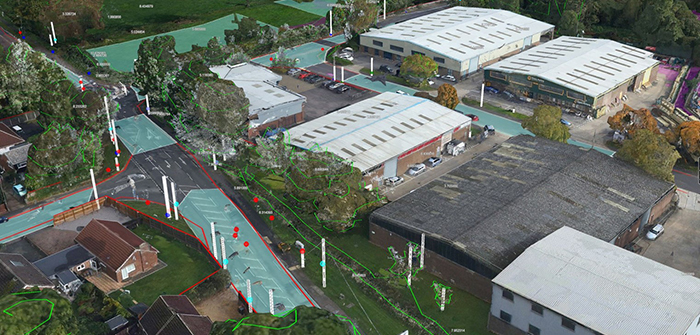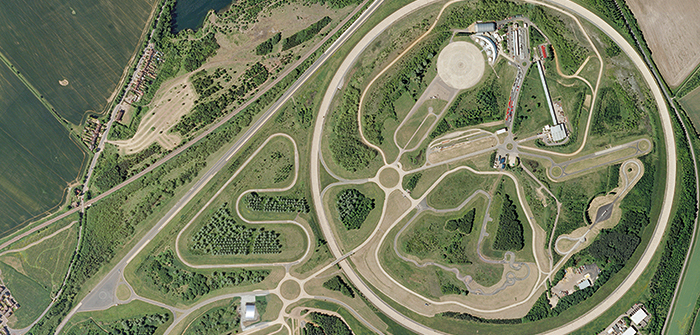To achieve the automotive industry’s goal of rolling out Level 4 self-driving vehicles across the UK by 2030, Zenzic has worked to develop a Connected and Automated Mobility (CAM) Roadmap.
Zenzic CEO Daniel Ruiz, who is one of the key actors on the initiative, believes that government, industry and academia must now unite to embrace the challenges ahead: “The areas that must be addressed immediately include developing infrastructure, raising public awareness, pushing for acceptance, and security. The only way to make progress at pace is for the whole sector to align on these collective goals. Over 250 people from more than 150 organizations have worked with Zenzic to create the roadmap. Collaboration is critical.”
Ruiz believes that the first successful commercial services will be in closed environments. “Autonomous vehicles will soon be on our motorways, college campuses, hospitals, airports and industrial estates. However, there will be long stages of trial and development before the transition to the wider network begins, firstly in small-scale deployments, and then scaled up across the board.”
Before and during the transition phase, the main challenge will be to educate and convince the public that the new technology will have benefits in terms of personal mobility, cost saving and safety. “Artificial intelligence is already being used to predict hazards on our roads,” Ruiz adds. “Working with Transport for London, UK startup Humanising Autonomy is using AI to predict the behavior of vulnerable road users and give alerts to bus drivers. This type of technology will dramatically increase safety on the roads.”
At a network level, IT company Sopra Steria plans to monitor the majority of London’s 400 miles of main roads and collate information on all traffic incidents at a central control system. As this will include predictive analytics on how incidents should be dealt with to get the traffic moving, it has the potential to transform how cities like London cope with accidents, congestion, and even air pollution.
All new vehicles produced in the UK from 2025 are expected to be connected, so security will also be scrutinized like never before. “Cyber-resilience isn’t just about defending against malicious actors. It’s about how we react to power and communications outages to maintain services. Security is also a fundamental part of public acceptance of self-driving vehicles.
Ruiz continues, “There are so many dimensions to the challenge, which is why some countries are more prepared in certain areas and less in others. Take the Netherlands, for example, they’ve embraced electric vehicles more than most of Europe and, as the development of EVs runs in parallel with the transition to autonomous driving, they appear to be ahead of the curve. However, the business case for EVs is relatively simple because this agenda addresses two goals: reducing the impact of transport on the environment; and supporting manufacturing.
“Connected and autonomous mobility goes way beyond this because it involves complex social and economic interactions between vehicles, people, other transport, the road network itself, buildings, roadworks, and more. Arguing the case for this and unlocking the potential is harder. The biggest challenge facing the UK is therefore regulation, but the good news is that, in terms of codes of practise, innovation and technology, Britain is the benchmark for other countries.”
In the USA, a survey conducted by Adobe Analytics in October 2019 confirmed that initial reluctance to embrace self-driving technology was changing. Today, more than 40% of American drivers, the majority of them millennials, say they would invest in an autonomous vehicle.
As the vast road network in North America is managed by the individual states and needs blanket legislation to modernize it for autonomous driving, the focus in the USA has been on developing the vehicles themselves. To conform with industry standards on autonomous driving, they will need to be fitted with dedicated short-range communications (DSRC) technology. This two-way, short-range wireless channel – much like wifi – enables vehicles to communicate with one another, as well as infrastructure like traffic signals. Low latency allows almost instant messaging over a highly secure network with little interference.
Autonomous vehicles will utilize DSRC – or similar architectures such as C-V2X communication – to alert drivers if they need to respond to other vehicles or infrastructure. The technology also incorporates adaptive cruise control, blind-spot and lane-change warnings, collision avoidance, red light warnings, adverse weather alerts, and pedestrian warnings.
While the USA may be forging ahead with a vehicle-centric approach, Ruiz believes that the UK’s record of collaboration between infrastructure, local authorities, and manufacturers is a key factor in Britain. “There are definitely advantages to having a single authority managing the UK’s strategic road network, and our analysis shows that the CAM Roadmap to 2030 will accelerate the initial deployment of freight automation along motorways. However, the real benefits of CAM lie in the ability to deliver end-to-end journeys that involve the other 150 highway authorities. It’s for this reason that Testbed UK incorporates highways authorities across the SRN in both urban and rural environments.”
Ruiz concludes that artificial intelligence and the enormous amount of data already being gathered should make autonomous vehicles much safer than human drivers.
“To achieve the Roadmap to 2030 goal, continued investment from the government, industry and private enterprise will be needed. With Testbed UK and Zenzic, as well as proving grounds like MIRA and Millbrook taking center stage, and early trials such as the StreetWise initiative in Croydon and Bromley, the UK is at the forefront of the self-driving revolution.”
An image showing high-definition mapping

A birds-eye view of Millbrook



